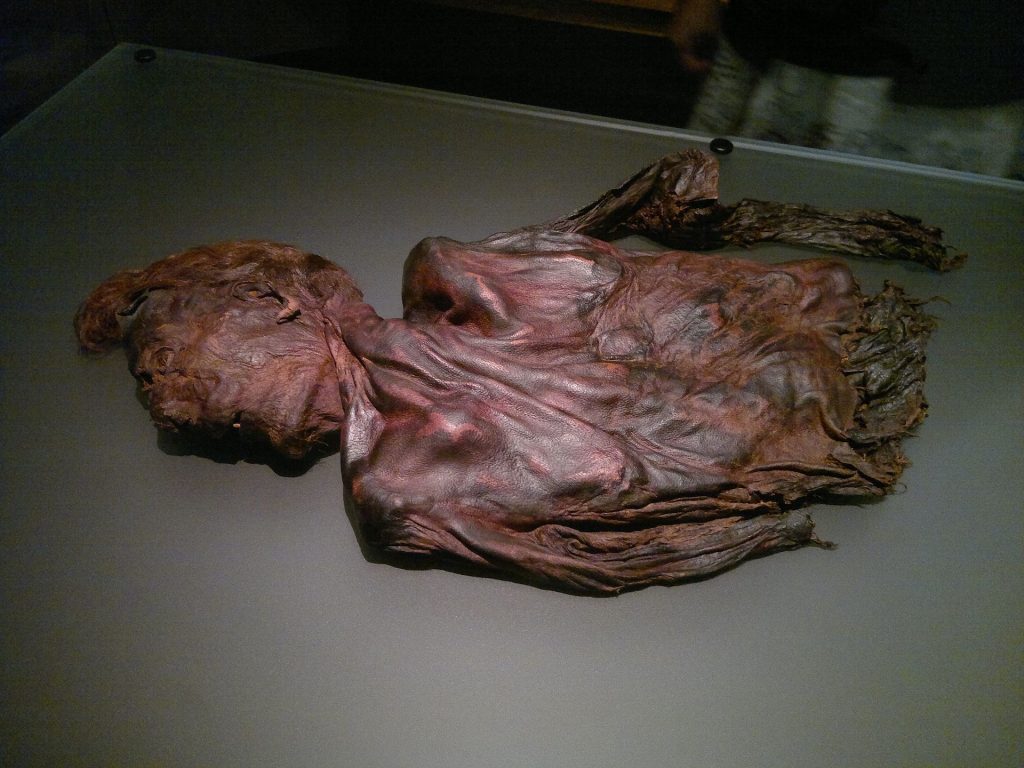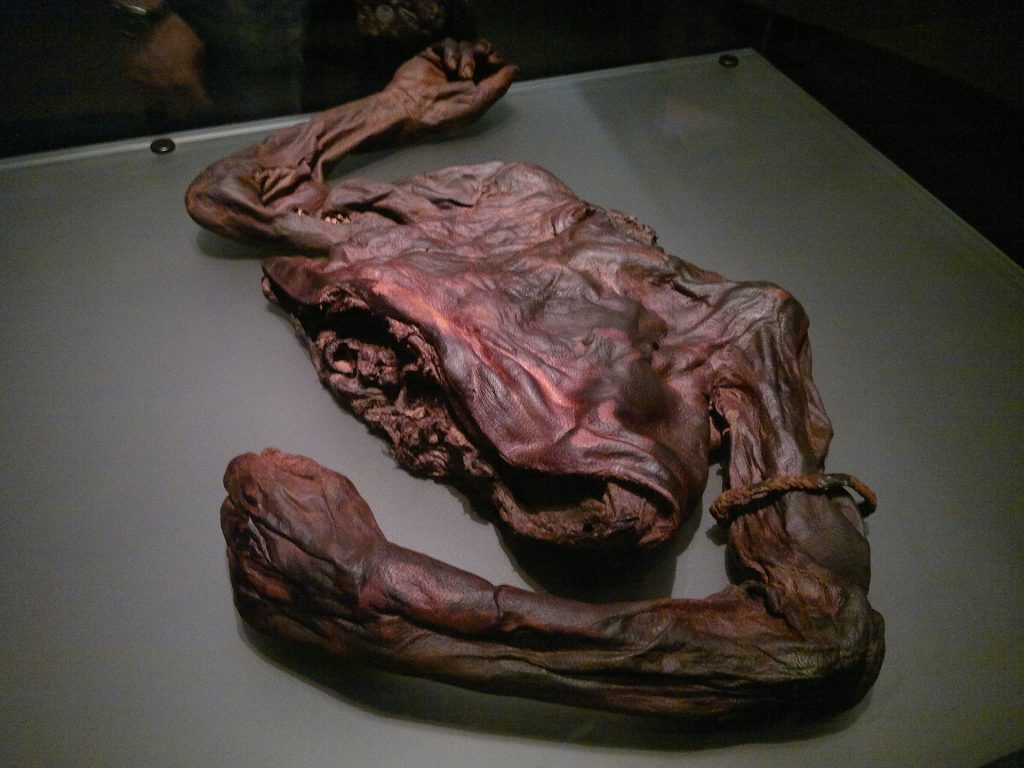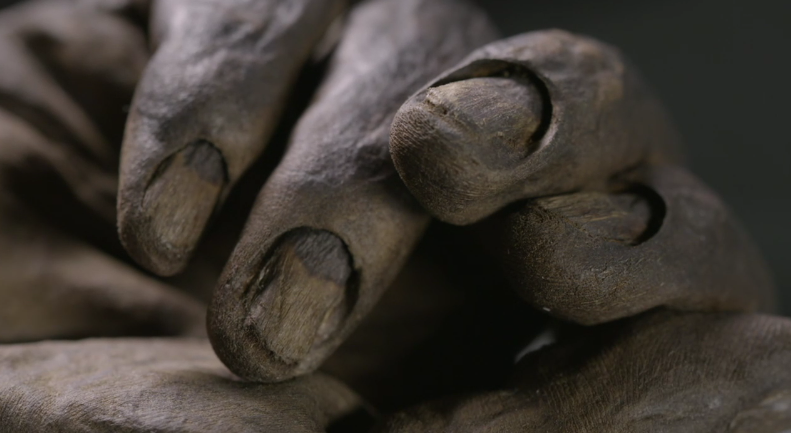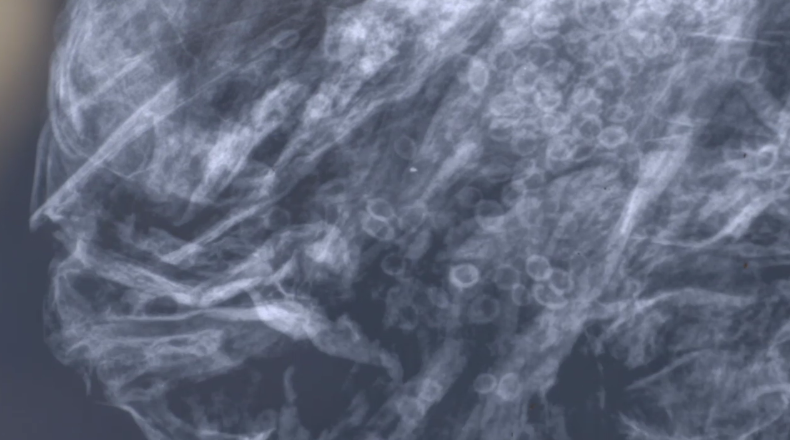Cathbad placed his hand on the woman’s stomach and prophesied that the unborn child would be a girl named Deirdre, and that she would be exceedingly beautiful but would bring about the ruin of Ulster.
FROM THE TÁIN BÓ CUAILNGE
A recurrent theme in stories about the Irish gods is that of the love triangle between an old husband (or fiancé), a young suitor and a young girl. This is probably a disguised myth of sovereignty wherein an old king is challenged by a young claimant to the throne. The young girl in the middle of the triangle may be identified with the goddess of sovereignty, whose power of granting prosperity to the land had to be won by means of sexual union with the young pretender. If the land needed revivifying, the old mortal king had to be deposed in favour of vigorous youth.
Aldhouse-Green, Miranda. The Celtic Myths: A Guide to the Ancient Gods and Legends (Kindle Locations 975-981). Thames and Hudson Ltd. Kindle Edition. (My bolding in all quotations)
We also have Roman testimony that the Celts practised human sacrifice:
They used to strike a human being, whom they had devoted to death, in the back with a sabre, and then divine from his death-struggle. But they would not sacrifice without the Druids. We are told of still other kinds of human sacrifices; for example, they would shoot victims to death with arrows, or impale them in the temples, or, having devised a colossus of straw and wood, throw into the colossus cattle and wild animals of all sorts and human beings, and then make a burnt-offering of the whole thing.
Compare the circularity of “Biblical archaeology”:
Q: How do we know that the Biblical King David existed?
A: Archaeologists have unearthed the Tel Dan inscription that contains the expression many translate as “House of David”.
Q: How do we know that that inscription should not be translated temple of the beloved (david=beloved), a reference to a deity?
A: We have the Biblical story about King David.
The moral of this post is that correlation does not imply causation. We love mythical tales, both Celtic and Biblical. We often want to believe there is some truth behind them so it is easy for us to interpret archaeological finds as evidence for that “historical core”. But we fail to see that we are falling into the trap of circularity when we do that:
Q: How do we know the stories of Celtic human sacrifice were true?
A: Archaeologists have unearthed evidence of ritual killings.
Q: How do we know the evidence of the bones points to ritual killing?
A: That is the most natural interpretation given the literary accounts of human sacrifice.
- Left unasked of the evidence: could the evidence of bones be explained in other ways? a post-death ritual misunderstood by the Romans, for example?
- Left unasked of the Roman accounts: were tales of barbarism among conquered peoples manufactured to justify Roman belief that their conquests were a civilizing mission?
–o0o–
Lindow Man
In August 1984, the mechanical digger of peat-cutters working at Lindow Moss in Cheshire uncovered a human arm, part of a 2,000-year-old bog-body. The remains were those of a young man in his prime, about 25 years old. He was naked but for an armlet made of fox-fur, and no grave goods accompanied him. The mistletoe in his digested food revealed that he had eaten a special ‘last supper’. Like the Irish victims, this man had horrific injuries leading to his death: most significant were at least two blows to the head that cracked his skull and stunned him; he was then garrotted and, at the same time, his throat was cut.
The triple manner of his death has led some to connect him with the early medieval myth of the ritual threefold death that befell some Irish kings. One of these was the 6th-century AD Diarmaid mac Cerbhaill, who enquired of his wise men the manner of his death. The answer was that he would be stabbed, drowned in a vat of ale and burnt. Diarmaid scorned the prophecy, but it came to pass. Lindow Man was selected for a special death and burial. It was important that his body would be frozen in time, not permitted to decay, so the normal rites of death and ease of passage to the next world were denied him. His journey to the Otherworld was halted at the gate leading out from the world of humans.
Aldhouse-Green, Miranda. The Celtic Myths: A Guide to the Ancient Gods and Legends (Kindle Locations 2696-2708). Thames and Hudson Ltd. Kindle Edition.
–o0o–
Murder on the Mire
One Irish story, in the Cycle of Kings, describes the events leading up to the convoluted death of King Diarmuid. The king slays the man his wife has been having an affair with, and a Druid, or prophet, named Bec Mac De, foretells that he will suffer a three-fold death as a result – at the hands of one of the adulterer’s relatives, Aedh. The prophecy was very precise: Diarmuid would be killed by wounding, burning, drowning and a ridge pole falling on his head (a fourfold death, in fact). Eventually the prophecy is fulfilled. Black Aedh, in the doorway of the house where the king is feasting, pierces Diarmuid through the chest with his spear and breaks his spine; Diarmuid flees back into the house, but Aedh’s men set it on fire; Diarmuid immerses himself in a vat of ale to escape the flames; finally, the roof beam of the burning house falls on his head and finishes him off.
The triple deaths of kings and warriors described in the Irish myths, very often prophesied in advance, involve accidental fatal injuries as well as intentional assaults, but they may mythologize an actual practice: a ritual form of threefold killing. Perhaps this is a rare and valuable clue, from Celtic – rather than Roman – literature, that the Celts did indeed carry out human sacrifices.
Roberts, A. (2015). The Celts by Alice Roberts (UK Airports edition). Heron Books.
Alice Roberts is not a historian but she is a paleopathologist and does understand the scientific method and the principles of valid research. And her discussion of the evidence for human sacrifice among the Celts is instructive.
Roberts asks how we can know that Roman reports of Celtic human sacrifice were not “malicious fictions”, “deliberate anti-Celtic propaganda”. Could those reports have arisen as a result of misunderstanding alien Celtic funerary rites? Or if Celts did sacrifice their fellow creatures could that have been a form of capital punishment for criminals? (Roberts makes the wry observation that though the Romans were scandalized by stories of barbarians offering human sacrifices to appease the gods they had no qualms about killing people for fun in gladiatorial contests or displays of wild animals attacking victims in the arena.)
For the BBC program on the Celts Roberts interviewed the Irish archaeologist Ned Kelly. (As an Australian I have to wonder if anyone could survive in Australia growing up with that name.) The first body discussed is that of Clonycavan Man from between 400 to 200 BCE (who looks very similar to the much later Lindow Man above).

This poor individual bears the marks of several fatal injuries. The skull has suffered a severe blow to the face that had broken its nose. The back of the skull, in addition, has been struck several times.
In the same museum Roberts showed viewers another find, that of Old Croghan Man (ca 360-170 BCE):

The hands of Clonycavan Man appear to tell a special story. Roberts writes:
I looked carefully at his hands. They were so amazingly well preserved that I could see his fingerprints. They were smooth, uncalloused. The nails were neatly trimmed. Archaeologists have suggested that these smooth and manicured hands indicate that this man wasn’t used to manual work – that he was someone of very high social standing.

A king, perhaps?
The body has been decapitated, sliced in half, and stabbed in the left side of his chest. That looks like a “three-fold killing”. Further, his “arms had been cut and hazel withies inserted through them”; and his nipples were half cut off.
It’s hard to know what to make of these other injuries, especially as there’s no real way of knowing whether these insults to the body happened before or after death. The withies through the arms and the nipple slashing could be evidence of torture. But archaeologist Ned Kelly, the former Keeper of Irish Antiquities at the National Museum of Ireland, believes that there is something more strange going on – and that these injuries were part of the rites that accompanied the killing of a king.
Then there’s Moydrum Man (dated around 700-400 BCE). He is famous for what has been found in his guts: 300 sloe fruit stones!

Ned Kelly explains what he believes we are looking at here:
Nobody’s going to ingest 300 sloes no matter how hungry they are. I think we can say this is a ritual meal. First of all, the sloe ripens at the end of October and at the beginning of November. That is the festival of Samhain, modern Halloween. And that is the time of year which, according to the early Irish written material, kings were killed. (The Celts, Season 1, Episode 3, 42:40)
Kelly also interprets Clonycavan Man and Old Crogham Man as “clear evidence for . . . ritual killings”.
Why a three-fold death? Perhaps there is some relation to the sovereignty goddess Sadhbh since she appeared in three different forms: maid, nymph and hag.
And we have not yet discussed the location of these bodies. They were apparently found “near hills where kings were inaugurated, or near boundaries between ancient kingdoms.”
So the details accumulate and it is easy to find reasons to believe what we would like to believe.But here is where Alice Roberts issues a sober warning:
The problem with such interpretations of the bog bodies is that the physical evidence may cast light on how someone was killed, but, as I have mentioned before, it can never tell us why that person was killed. Was Ned just looking for ways to explain the archaeological finds through mythology? Could he justify the links he was making between accounts of history and mythology, written in the early Middle Ages, and prehistoric cultures dating to centuries, if not millennia earlier? Ned argued that there was a striking correspondence between the details described in the tales and the evidence presented by the bog bodies. But I was concerned that we risked entering into a circular argument again, using the Celtic myths to make inferences about the meaning of these deaths, interpreting them as ritualistic, and then using the bodies to support an ancient reality behind the myths.
The stories Ned told, about hills where kings were crowned, right back into the Iron Age and even earlier, about traditional boundaries having a similarly ancient origin, and about kings being ritually sacrificed to the sovereignty goddess when their luck ran out, were wonderful. I wanted to buy it. I wanted to believe in these ancient rituals and believe that the bog bodies were sacrificed kings. I wanted to believe that we could understand these ancient cultures in this much detail. But the stories only seemed to run around in circles, justifying themselves.
I wasn’t convinced that the bog bodies constituted evidence of ritual death, let alone the triple death of kings. After all, Ned’s story was just one among a number of possible hypotheses. There could be other reasons for very obviously violent deaths – that people were being made an example of, for instance, like being hanged, drawn and quartered. Even the withies through the arms and the cut nipples of Old Croghan Man could have been plain torture, rather than a complicated ritual associated with human sacrifice. And leaving the bodies in bogs could have been a much less thoughtful method of disposal than Ned was suggesting. And I didn’t see any clear reason to infer that these deaths and depositions, sporadically appearing over the course of two millennia, should be linked by anything more than coincidence and accident. The role of chance is often underplayed, especially in archaeology. We like to spot patterns and, above all, we like to believe there are reasons for those patterns.
Roberts, A. (2015). The Celts by Alice Roberts (UK Airports edition). Heron Books.
Surely, though, Moydrum Man’s belly overloaded with 300 sloe plums, a very bitter fruit, cannot be explained away. Even Roberts found herself agreeing with Kelly that these had to be signs of a ritual last meal. Yet even here Roberts found a reason to question the theory of a ritually sacrificed king. A closer examination of the bones showed, at least to Roberts’ trained eye, that they belonged to a woman.
If you enjoyed this post, please consider donating to Vridar. Thanks!

The bones belonged to a woman? See a couple of posts ago about ‘Boudica, the Celts did have female rulers.
It reminds one of James G. Frazer in “The Golden Bough,” and his preoccupation with texts about the ritual sacrifice of kings. If an ancient text says that a foreign culture, with a different language than that of the text’s writer, in an earlier time than the text’s writer, annually sacrificed a king for some mysterious reason, we should take this as “evidence,” not of a text, but of the faithful documentation of the actual event, until proven otherwise. Then we should proceed to create elaborate arguments and theories as to why the event happened. Other scholars may disagree and come up with their own theories, but what cannot be questioned is the “event” itself, because we have “evidence” of the event in the form of a text. You cannot question the text itself, because if you do that, why, there’s no end to the skepticism.
Human beings simply have a very difficult time with words written down. The mind rebels furiously at the idea that what is written down is not somehow, someway, truthful, or in some way related to reality and actual experience.
Part of what you are saying coheres with other works I have been examining recently. I have picked up armsful of books on historical method in response to a recently published biblical scholarship doctoral thesis that repeatedly made the strange point that methods of biblical scholars were no different from those of historians in other fields. (I’ll be posting on it soon.) What I see in these books addressing historical method is the need for corroboration of claims found in texts. That’s quite different from what I typically find in biblical studies where the focus is on “criteria of authenticity” or “memory theory”. Forget all of that: just ask if a claim in a text (gospel) can be corroborated by an independent source that derives from a time contemporaneous with the event. One arrives at quite different results that way.